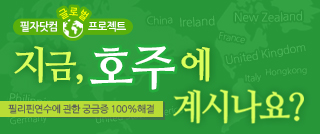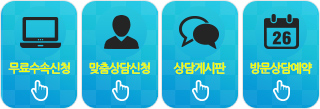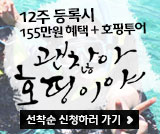ДЉБИГЊ ОЫСіИИ ДЉБИГЊ ОЫСіИјЧЯДТРЬОпБт1
ЙйЗЮ ХТБиБтПЁ АќЗУЕШ РЬОпБтРдДЯДй~!!
РЬСІ 2СжТїРЬСіИИ НКРЇНКРЮ ФЃБИАЁ БЙБтРЧ РЧЙЬАЁ ЙЙГФАэ ДйИЅОЦРЬЖћ РЬОпБтИІ ЧЯДТАЩЗЮКИАэ.. '
Пж РкБтГЊЖѓ БЙБтРЧ РЧЙЬИІ И№ИЃГФАэ РћРнРЬ УцАнРЛЙоОвНРДЯДй~!
РњЕЕ ЧбБлРК ОюДРСЄЕЕЗЮ МГИэРЛ ЧЯСіИИ РќКЮРЧ ГЛПыРЛ И№ИЃДТХЭЖѓ Дѕ УцАнРЛ ИдОњГзПф~!
БзЗЁМ ПУИГДЯДй РЇХАПЁ ПУЖѓАЁРжДТ ХТБиБтРЧ ГЛПыРдДЯДй!
| Name in Korean | Nature | Seasons | Cardinal directions | Four virtues | Family | Five elements | Meanings | |
|---|---|---|---|---|---|---|---|---|
| geon (АЧ / Ыы) | sky (УЕ / єИ) | spring (Ус / ѕ№) | east (ЕП / дд) | humanity (РЮ / ьв) | father (КЮ / нЋ) | metal (Бн / бб) | justice (СЄРЧ) | |
| ri (ИЎ / зю) | sun (РЯ / ьэ) | autumn (Уп / ѕе) | south (ГВ / бѕ) | courtesy (ПЙ / жЩ) | son (СпГВ / э) | fire (Ш / ћ§) | wisdom (СіЧ§) | |
| gam (АЈ / Ъь) | moon (Пљ / ъХ) | winter (ЕП / дЯ) | north (КЯ / нС) | knowledge (Сі / ђЊ) | daughter (СпГр / вГ) | water (Мі / тЉ) | vitality (Л§ИэЗТ) | |
| gon (Ая / Эо) | earth (Сі / ђЂ) | summer (ЧЯ / љО) | west (М / рЄ) | righteousness (РЧ / ыљ) | mother (И№ / йН) | earth (Хф / їЯ) | fertility (ЧГПф) |
| The flag of the Republic of Korea is unique among the national emblems of the world. Its design does not symbolize geographical or political division. It also does not portray any great historical event, national aim or ideals of this country. Rather, the Koreanflag symbolizes much of the thought, philosophy and mysticism of Asia. It encourages contemplation and philosophic interpretation of the varied meanings of the universe. |  |
 |
| In the center of a white background is a circle divded equally with each part resembling a comma. The upper red comma represents the yang and the lower blue comma the um, an ancient symbol of the universe that is in perfect harmony and balance. These twoharmonious forces, both complementary and in opposition, express the dualism of the cosmos or the absolute: fire and water, day and night, good and evil, masculine and feminine, hot and cold, etc. |
| This red and blue swirl and sometimes the flag itself is called the T'aeguk. The central thought in the t'aeguk form illustrates constant motion in the sphere of infinity where thereis also balance. For example, the opposite of rain is drought. Crops must have rain but too much rain will cause a flood and hardship, thus there must be a balance. |
| The three bars at each corner also illustrate the concept of opposites and balance. The three unbroken bars represent heaven while the three broken bars represent earth. The three bars in the upper right hand corner symbolize water while the three bars in the lower left handcorner represent fire. |
| For the Korean people their flag of t'aegukki is a source of pride and inspiration. During the Japanese occupation period beginning in 1910 the Korean flag was outlawed in public places and for about thirty five years the t'aeguk flags were kept hidden until Liberation Day in1945. The Korean flag has been a symbol of this country's struggle for independence and freedom. |
- ЁЄ
- ЁЄ[КъИЎСюЙј]ECОюЧаПј - ИЖПюЦОФэЛч
- ЁЄ[КъИЎСюЙј]ECОюЧаПј - ФЗКъИЎСі
- ЁЄ[КъИЎСюЙј]ECОюЧаПј - RSA
- ЁЄ[КъИЎСюЙј] EC - ШЃСж ПЕОчСІ
- ЁЄ[КъИЎСюЙј]ECОюЧаПј - ШЃСж БЧХТБт
- ЁЄ[КъИЎСюЙј]ECОюЧаПј - УЙ ЙіНК УМЧшБт(ЗБФС
- ЁЄ[КъИЎСюЙј]ECОюЧаПј - ФЗКъИЎСі
- ЁЄ[КъИЎСюЙј]ECОюЧаПј - New year fireworks
- ЁЄ[КъИЎСюЙј]ECОюЧаПј - УЙ НЮЙ№ МіПЕ
- ЁЄ[КъИЎСюЙј]EC - ЧаПј ШІИЎЕЅРЬ ГЁ, inter
- ЁЄ[КъИЎСюЙј]ECОюЧаПј - КъИЎСюЙјРЧ ХЉИЎНКИЖ
- ЁЄ[КъИЎСюЙј]ECОюЧаПј - ЧаПјПЁМРЧ Йн КЏАц
- ЁЄ[КъИЎСюЙј]ECОюЧаПј - ПРСі ФЃБИЕщ
- ЁЄ[КъИЎСюЙј] ECОюЧаПј - РЯ НУРл


1/2








КЛ ЛчРЬЦЎРЧ И№Еч ФмХйУїРЧ РњРлБЧРК СжНФШИЛч ПЅЙіНУРЏЧа Йз ЧЪРкДхФФПЁ РжРИИч, РЬИІ РЬПыЧЯДТ АцПь РњРлБЧЙ§ ЕюПЁ ЕћЖѓ Й§РћУЅРгРЛ Сњ Мі РжНРДЯДй.


ЧЪРкДхФФРК ШИПјПЉЗЏКаРЧ ОШРќЧб ЛчРЬЦЎ РЬПы Йз ПЯКЎЧЯАд АГРЮСЄКИИІ КИШЃЧЯБт РЇЧи SSL(Secure Socket Layer)ЙцНФ ОЯШЃШ УМАшПЁ РЧЧи КИШЃЕЫДЯДй.
Copyright ЈЯ 2006 philja.com. All rights reserved.







 ЧЪРкДхФФ ОпАЃЛѓДу ПРЧТ
ЧЪРкДхФФ ОпАЃЛѓДу ПРЧТ 12ГтПЌМг МвКёРкИИСЗ 1РЇ
12ГтПЌМг МвКёРкИИСЗ 1РЇ
 ГЛАд ИТДТ ОюЧаПј УЃБт
ГЛАд ИТДТ ОюЧаПј УЃБт
 ИЎОѓ ЧаБГ ЙцЙЎБт
ИЎОѓ ЧаБГ ЙцЙЎБт
 СжИЛПЁ ГЛАЁ ОЕ КёПыРК?
СжИЛПЁ ГЛАЁ ОЕ КёПыРК? УжАэАЁМККё РЬКЅЦЎ СёБтБт
УжАэАЁМККё РЬКЅЦЎ СёБтБт
 ЧіСіПЁМЕЕ ЧЪРкДхФФ!
ЧіСіПЁМЕЕ ЧЪРкДхФФ! ЧіСіПЁМ АЁДЩЧб
ЧіСіПЁМ АЁДЩЧб









 ЧЪРк ЦЏБо Ч§ХУ! ФСНУОюСі МКёНК
ЧЪРк ЦЏБо Ч§ХУ! ФСНУОюСі МКёНК



































